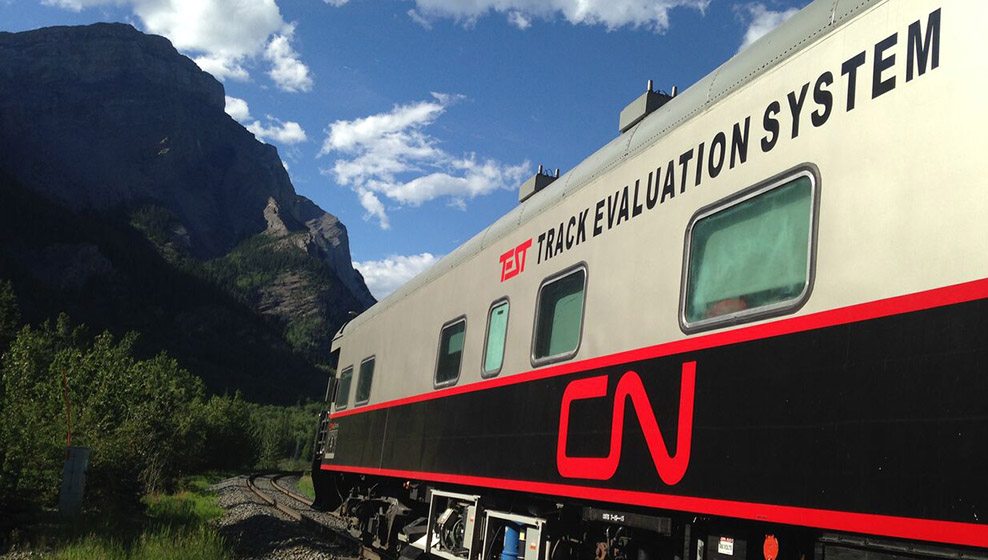We’ve Come a Long Way Since the Last Spike
Innovation has always been key to the success of our nation’s railways. But in today’s world, staying ahead of the pack by investing in state-of-the-art technologies and process improvements is more important than ever before. That’s why Canada’s railways have fostered a culture of innovation; whether they’re using new train configurations to decrease wear and tear on railcars and tracks, installing retro-reflective materials and LED lights to make rail crossings more visible, or double-stacking intermodal containers to improve capacity, Canada’s railways are constantly innovating to make their operations safer and more efficient.

Harnessing Innovation Today for a Better Tomorrow
Canada’s rail sector was one of the first industries to embrace wireless communications, and later, computer networking. Our railways continue to invest in new technologies to help them manage the transportation of tens of thousands of passengers and shipments of goods each day. From overseeing crew assignments to planning the movements of locomotives and railcars, Canada’s railways depend on innovative tools to keep their trains running safely, efficiently and reliably.
Railway innovation has obvious benefits for customers. Today’s web-based applications allow freight rail shippers to request prices, order and trace cars and check bills in real time, helping them to make sales, inventory and logistical decisions with confidence. Ultimately, railway innovation lowers costs for customers, increases productivity, and helps Canadian businesses to compete in the global marketplace.
Arguably the most important innovation in freight railroading in the past two decades has been “precision railroading.” Pioneered by Hunter Harrison, former CEO of CN and later CP, precision railroading requires a detailed trip plan for every shipment, and emphasizes continuous improvement in safety, customer service and efficiency. Real-time data gathering and analytics ensure that changes in traffic patterns or other issues are quickly identified and mitigated. By sharing these metrics, railways work with logistics providers across the supply chain to analyze choke points and improve the overall efficiency of Canada’s transportation system.
Technology Improves Safety
Our railways are also safer than ever before thanks to their investments in advanced technologies. Centralized rail traffic control and state-of-the-art communications systems ensure that trains are running over clear track. Wayside infrared detectors positioned across Canada’s rail network scan axles for overheated wheel bearings and identify dragging equipment that could derail trains. Special inspection cars use electronic sensing devices to ensure that rails and roadbeds are safe. Locomotive voice and video recorders will soon provide railways with another tool to proactively manage safety and prevent accidents. In total, Canada’s railways have invested more than $21.5 billion over the past 10 years to ensure the safety and efficiency of their network – and that’s led to significantly lower accident rates.
Investing in a Cleaner Tomorrow
Canada’s railways are also investing in locomotives that consume less fuel and emit fewer greenhouse gas (GHG) emissions. Since 2005, Canada’s freight railways have reduced their GHG emissions intensity – the rail sector’s carbon footprint relative to its traffic – by 25.9 per cent. Newer technologies such as locomotive low-idle features designed to save fuel, automatic stop/start systems, and rail lubrication have also contributed to a more a sustainable, and innovative, rail system. Canada’s railways will continue to innovate and implement new technologies as they become available, so that they can remain a productive and sustainable player in the Canadian economy.